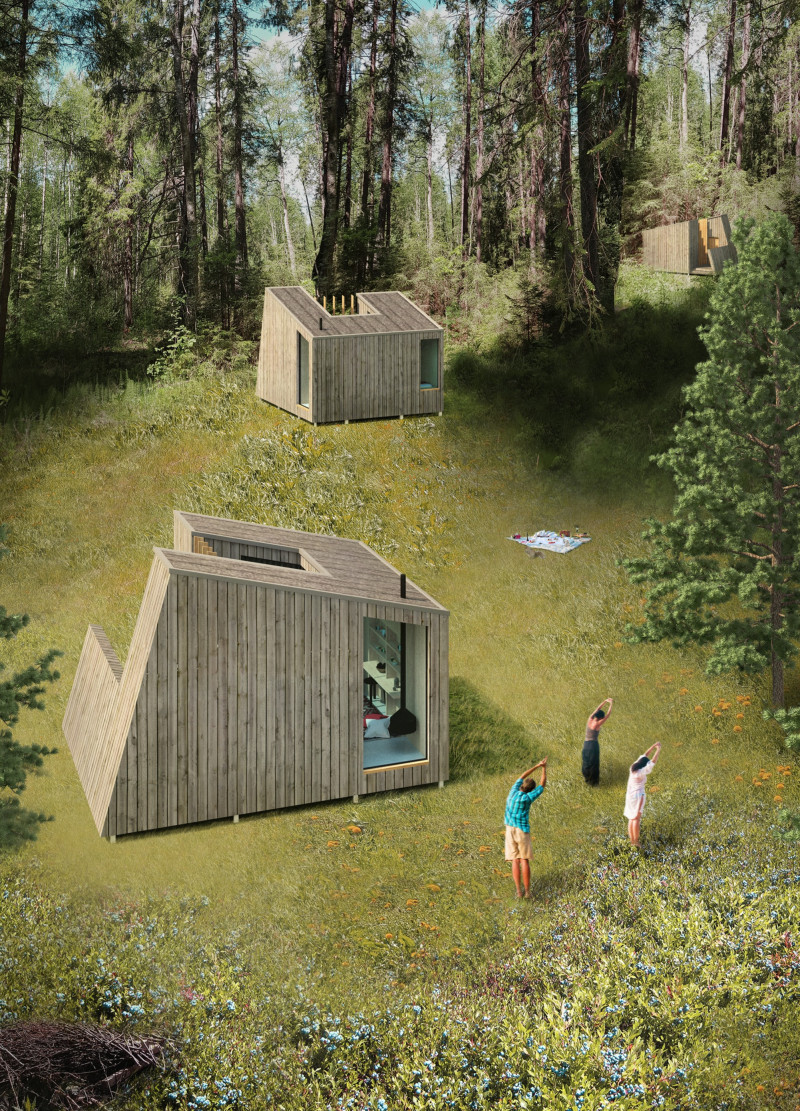5 key facts about this project
The architectural design is situated in a forest setting, focusing on ecology and ecotourism. It aims to create a deep connection with nature. The project takes the form of a small cabin that encourages reflection and calmness. At its core is a spiraling design that illustrates a journey of silence and meditation while balancing functionality and spirituality.
Spiral Architectural Form
The spiral shape of the cabin draws people toward a contemplative experience. This design element is not just for show; it signifies a spiritual path. At the center is an atrium that brings in natural light and frames views of the forest. This allows the inside and outside to interact harmoniously, making nature an integral part of daily life.
Spatial Arrangement and Functionality
Three key activities are prioritized in the cabin: eating, meditating, and resting. These functions are placed around the atrium, promoting balance and a sense of community within the space. The layout serves to enrich the experience for occupants, allowing them to fully engage with their surroundings while carrying out their daily routines.
Material Considerations
Sustainability is a central theme in the choice of materials. Spruce wood and glass are used prominently. Spruce not only provides structural strength but also connects the cabin to its natural surroundings. Glass allows light to fill the rooms and creates a visual connection to the forest, so occupants feel as if they are living within nature.
Elevated Integration
The cabin is raised above the ground, adapting to the uneven terrain. This elevation reduces the impact on the landscape. It also gives occupants clear views of the treetops. The inclined roof enhances the experience of being in nature, allowing light and views to come in while maintaining a sense of openness.
A wood stove provides heat, adding comfort while also being energy-efficient. These design details highlight a commitment to both environmental responsibility and the lived experience of those who inhabit the cabin. The design merges functionality with a deep respect for the natural world, creating spaces that encourage reflection and connection.


























